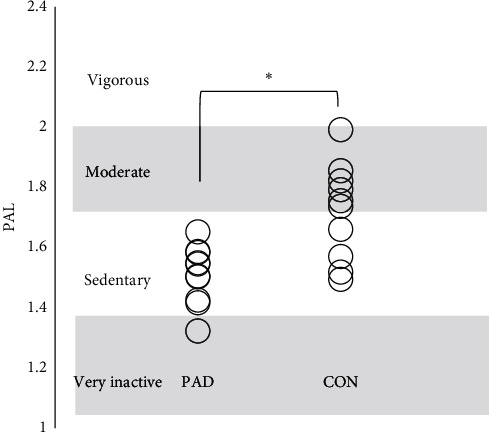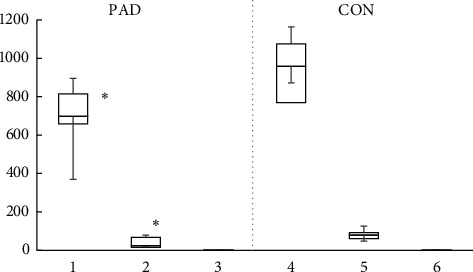Differences in Physical Activity between Patients with Peripheral Artery Disease and Healthy Subjects.
IF 2.1
Q4 GERIATRICS & GERONTOLOGY
Journal of Aging Research
Pub Date : 2020-10-20
eCollection Date: 2020-01-01
DOI:10.1155/2020/5093528
引用次数: 6
Abstract
Objectives Peripheral artery disease (PAD) is a significant prognostic marker of poor long-term survival due to limited physical activity associated with various functional problems, such as intermittent claudication. A physically active lifestyle has the potential to modify peripheral artery risk factors and promote general health. While low daily physical activity levels have been recognized in the population of PAD, the exact level has yet to be quantified due to lack of research. The aim of the present study was to compare physical activity level (PAL) and time spent at activities of different intensity levels between patients with PAD and healthy individuals. The study subjects were 10 patients with PAD and 10 age-matched healthy control subjects. We measured the time spent at light, moderate, or vigorous physical activity using triaxial accelerometer and calculated PAL. Intermittent claudication onset distance and maximum walking distance were defined as the distance walked at which the subject first reported leg pain and the distance at which the subject was unable to continue walking because of leg pain, respectively. Results Our results showed (i) lower PAL in patients with PAD compared with the controls; (ii) while there was no significant difference in the high-intensity activity between the two groups, the light- and moderate-intensity activities of the PAD group were significantly lower than the controls, the time spent at moderate-intensity activity was approximately 50% less; and (iii) among patients with PAD, low PAL did not correlate directly with intermittent claudication. Conclusions PAD patients limit the amount of their physical activity, especially light and moderate intensities. Our study highlights the importance of spending more time walking in daily life.


外周动脉疾病患者与健康人群体力活动的差异
目的:外周动脉疾病(PAD)是由于与各种功能问题(如间歇性跛行)相关的体力活动受限而导致的长期生存不良的重要预后标志。积极锻炼身体的生活方式有可能改变外周动脉的危险因素,促进整体健康。虽然人们已经认识到PAD人群的日常体力活动水平较低,但由于缺乏研究,确切的水平尚未被量化。本研究的目的是比较PAD患者和健康人的身体活动水平(PAL)和不同强度的活动时间。研究对象为10例PAD患者和10例年龄匹配的健康对照。我们使用三轴加速度计测量轻度、中度或剧烈体力活动的时间,并计算PAL。间歇性跛行起始距离和最大步行距离分别定义为受试者首次报告腿部疼痛的步行距离和受试者因腿部疼痛而无法继续行走的距离。结果:我们的研究结果显示:(1)与对照组相比,PAD患者的PAL较低;(ii)虽然两组之间的高强度活动没有显著差异,但PAD组的轻、中强度活动明显低于对照组,中强度活动的时间大约少50%;(iii)在PAD患者中,低PAL与间歇性跛行不直接相关。结论:PAD患者限制他们的身体活动量,特别是轻度和中度强度。我们的研究强调了在日常生活中花更多时间走路的重要性。
本文章由计算机程序翻译,如有差异,请以英文原文为准。
求助全文
约1分钟内获得全文
求助全文
来源期刊

Journal of Aging Research
Medicine-Geriatrics and Gerontology
CiteScore
5.40
自引率
0.00%
发文量
11
审稿时长
30 weeks
 求助内容:
求助内容: 应助结果提醒方式:
应助结果提醒方式:


